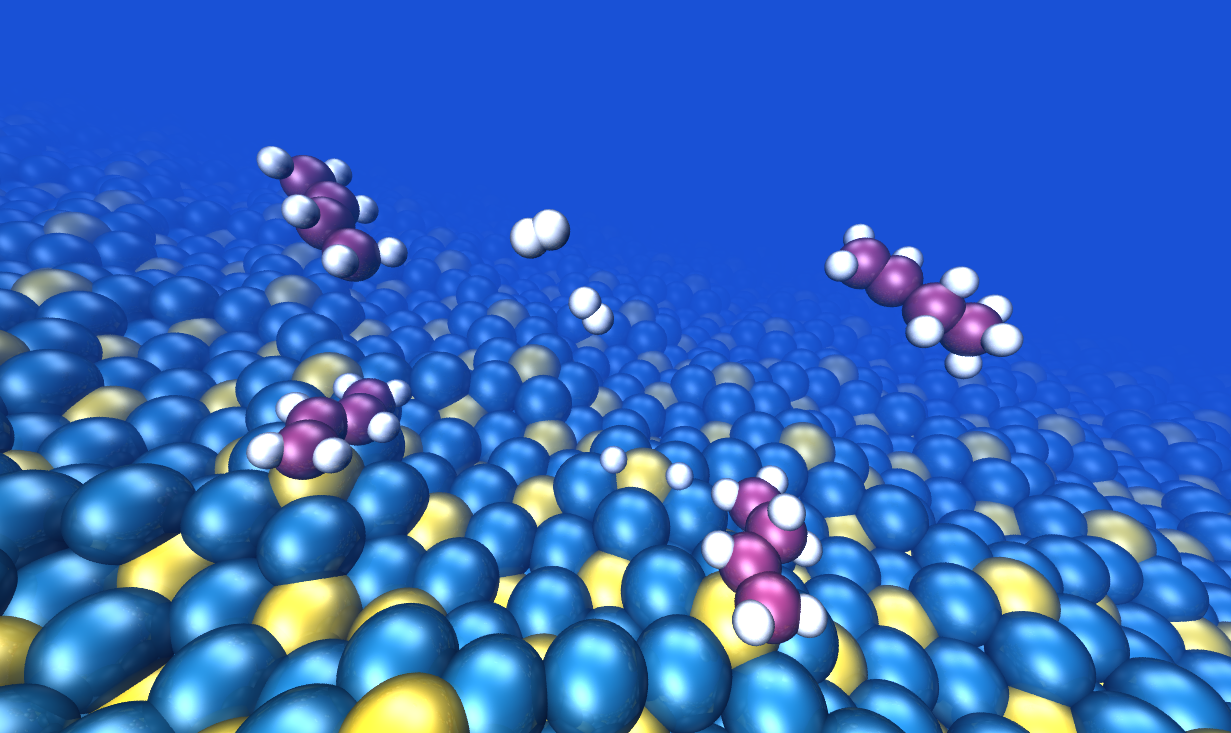Catalytic properties of Al13TM4 complex intermetallics
- 26
- Aug
- 2019
Catalytic properties of Al13TM4 complex intermetallics: influence of the transition metal and the surface orientation on butadiene hydrogenation
Laurent Piccolo,1* Corentin Chatelier,2,3 Marie-Cécile de Weerd,2 Franck Morfin,1 Julian Ledieu,2 Vincent Fournée,2 Peter Gille,4 Emilie Gaudry2*
1Univ Lyon, Université Claude Bernard - Lyon 1, CNRS, IRCELYON, Villeurbanne, France;
2Université de Lorraine, CNRS, IJL, Nancy, France;
3Synchrotron SOLEIL, L’Orme des Merisiers, Saint-Aubin, France;
4Department of Earth and Environmental Sciences, Crystallography Section, Ludwig-Maximilians-Universität München, München, Germany

Complex intermetallic compounds such as transition metal (TM) aluminides are promising alternatives to expensive Pd-based catalysts, in particular for the semi-hydrogenation of alkynes or alkadienes. Here, we compare the gas-phase butadiene hydrogenation performances of o-Al13Co4(100), m-Al13Fe4(010) and m-Al13Ru4 (010) surfaces, whose bulk terminated structural models exhibit similar cluster-like arrangements. Moreover, the effect of the surface orientation is assessed through a comparison between o-Al13Co4(100) and o-Al13Co4(010). As a result, the following room-temperature activity order is determined: Al13Co4(100) << Al13Co4(010) < Al13Ru4 (010) < Al13Fe4(010). Moreover, Al13Co4(010) is found to be the most active surface at 110 °C, and even more selective to butene (100%) than previously investigated Al13Fe4(010). DFT calculations show that the activity and selectivity results can be rationalized through the determination of butadiene and butene adsorption energies; in contrast, hydrogen adsorption energies do not scale with the catalytic activities. Moreover, the calculation of projected densities of states provides an insight into the Al13TM4 surface electronic structure. Isolating the TM active centers within the Al matrix induces a narrowing of the TM d-band, which leads to the high catalytic performances of Al13TM4 compounds.
SCIENCE AND TECHNOLOGY OF ADVANCED MATERIALS, 2019, VOL. 20, NO. 1, 557–567
https://doi.org/10.1080/14686996.2019.1608792